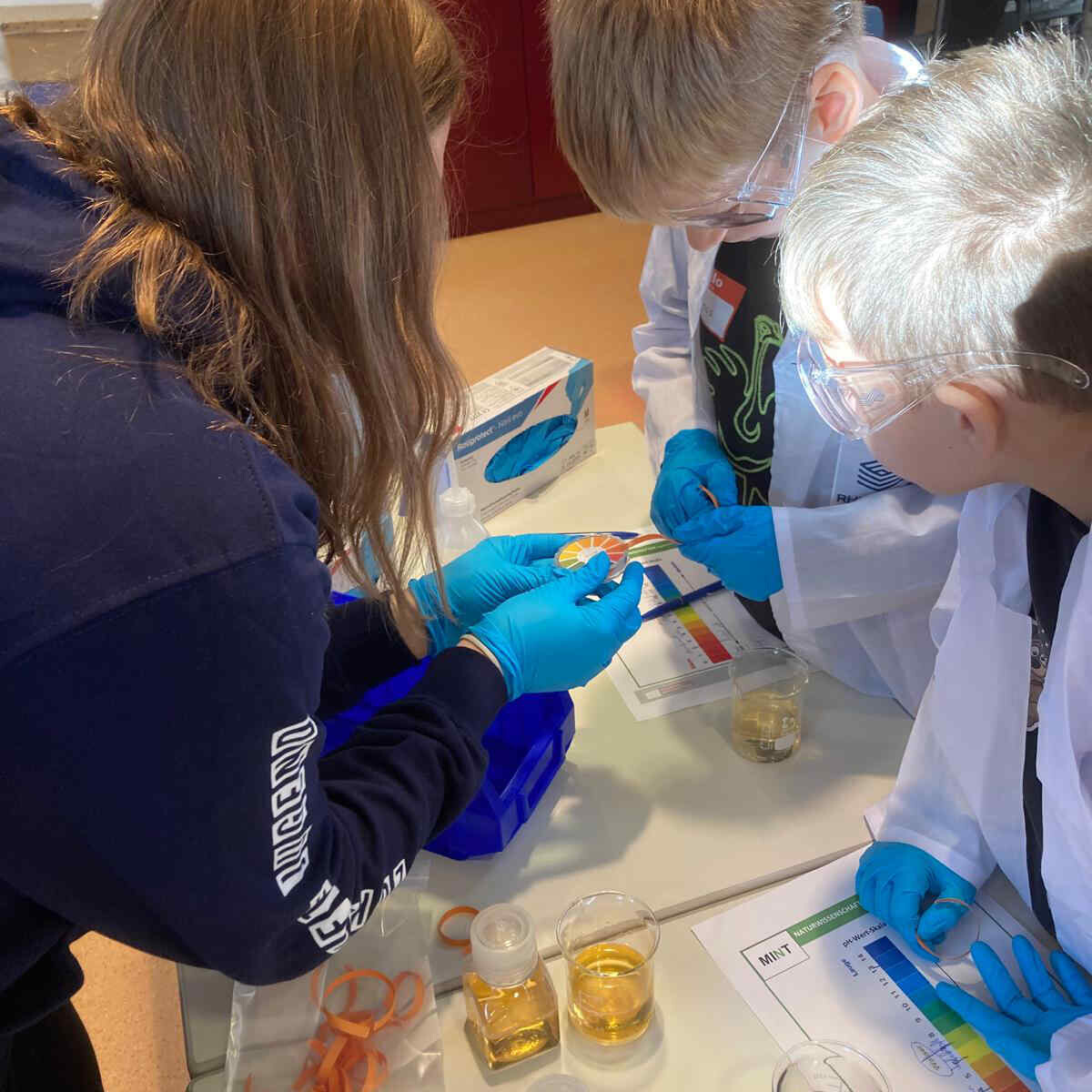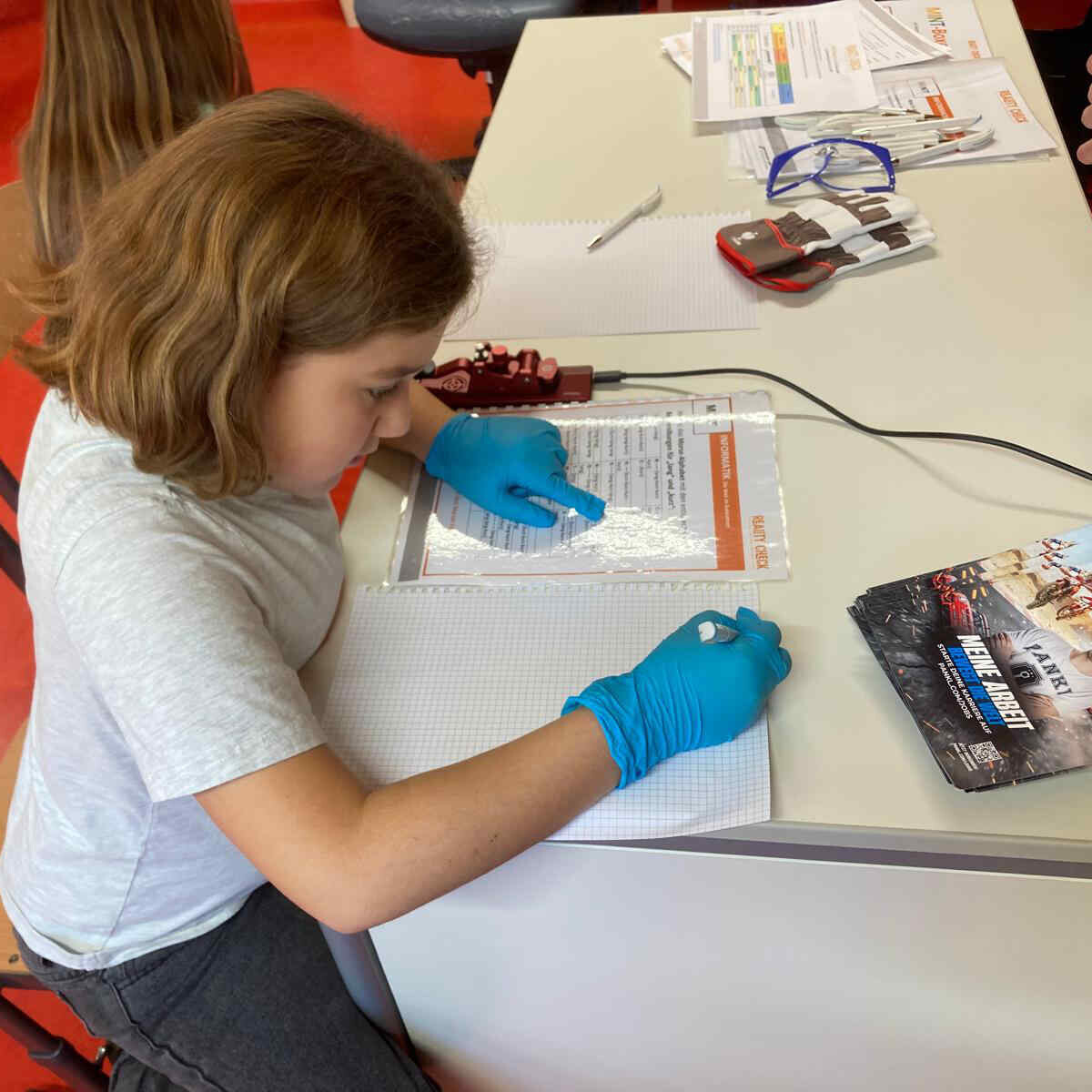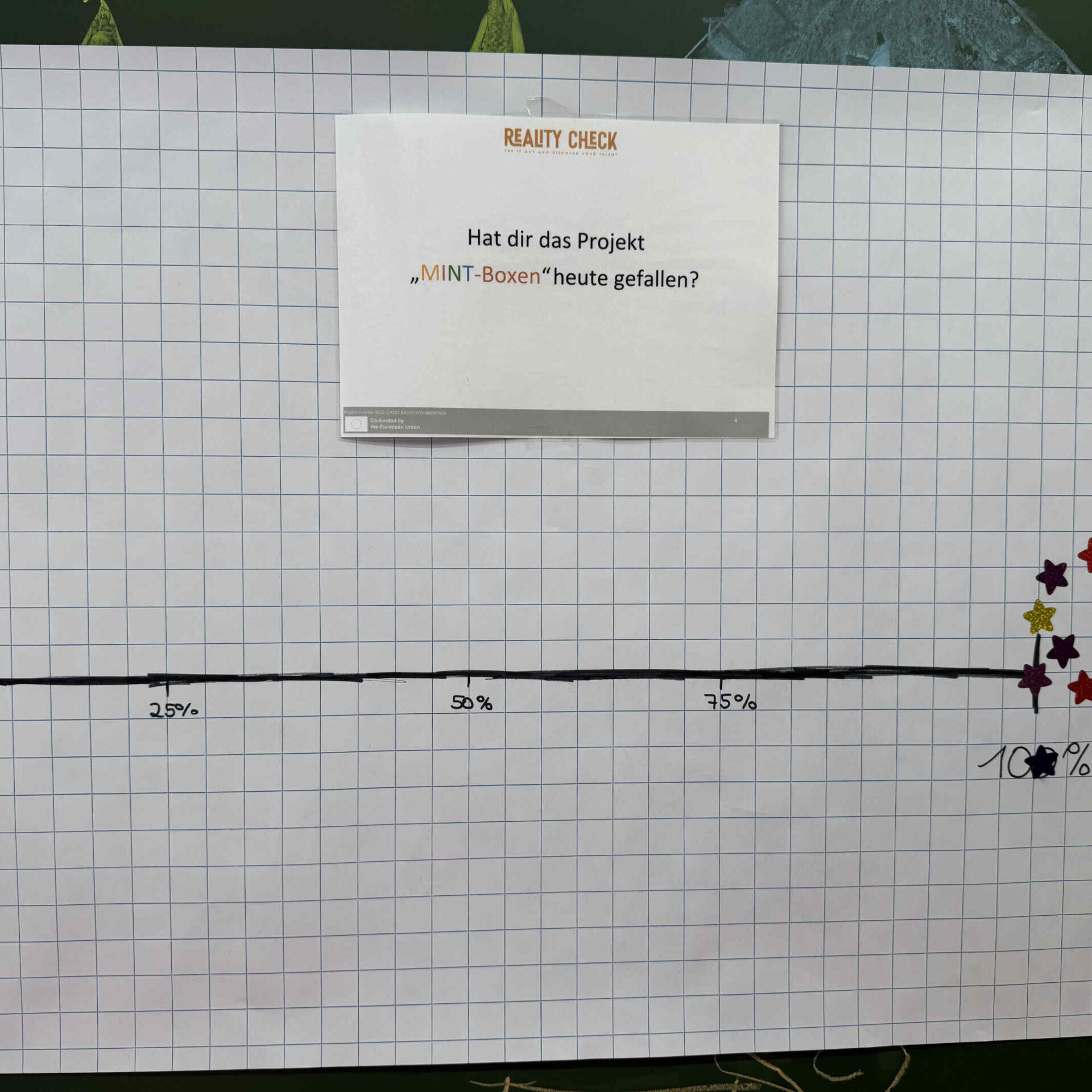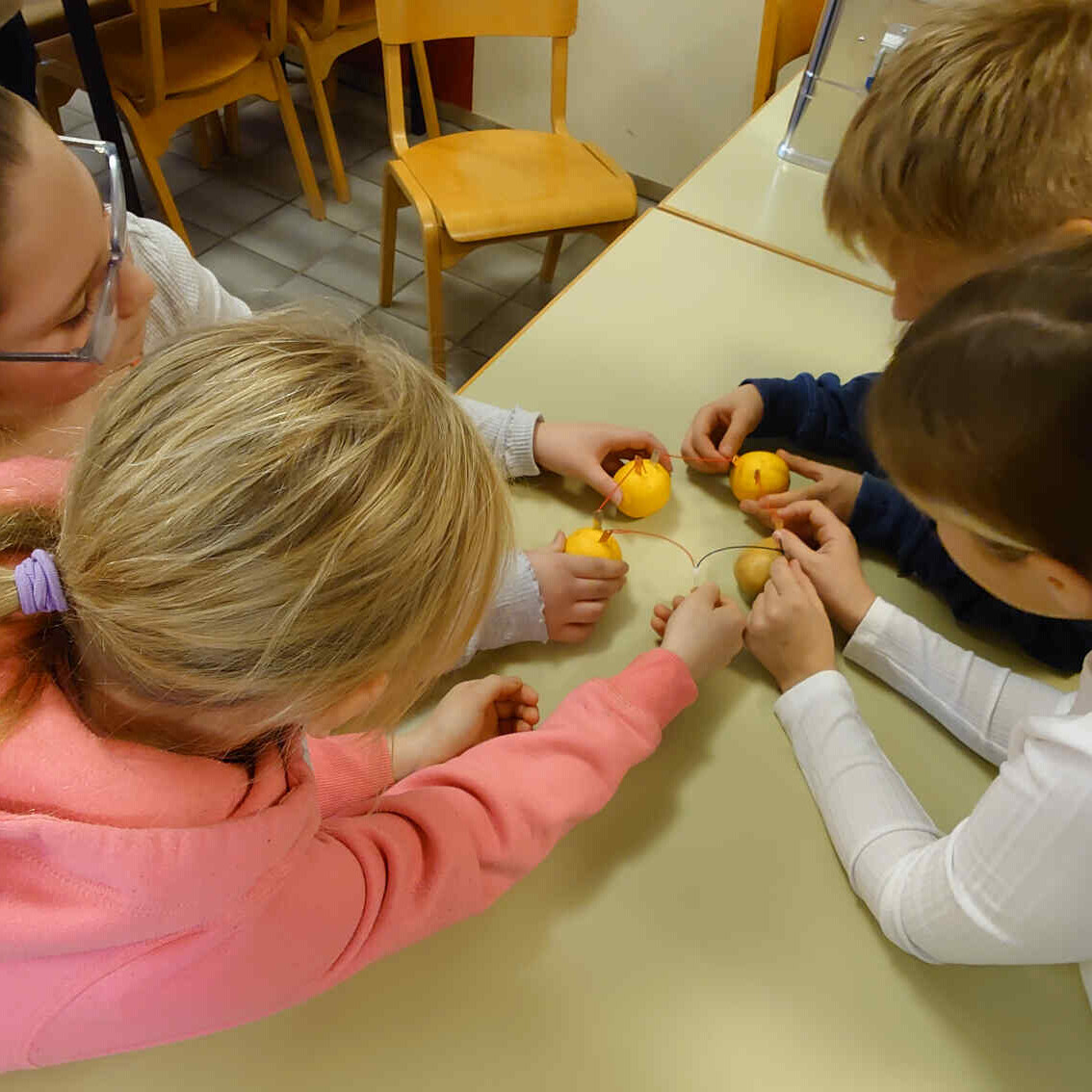Jobs out of the box – MINI MINT
MINI-MINT is a hands-on RealityCheck format for primary schools (ages 6–10). Simple experiments in mathematics, science, and technology are combined with authentic examples from companies. Children explore phenomena, conduct small experiments, and learn directly from company representatives why mathematics and science are relevant in everyday professional life. This playful and low-threshold approach helps to answer the question “Why do I learn this?” at an early age.
In line with the regional STEM strategy of Upper Styria East, an additional box was developed and tested within the RealityCheck. Unlike traditional sector-based approaches, this box allows pupils to experience professions across the fields of STEM – Science, Technology, Engineering, and Mathematics – in a practical and interdisciplinary way.
The implementation takes place within school lessons as part of the cross-curricular subject “Education, Career and Life Orientation” and therefore belongs both to the formal curriculum and the non-formal learning context.
MINI-MINT is a hands-on RealityCheck for primary schools (ages 6–10) that combines simple STEM experiments with authentic insights from companies. Children conduct playful experiments in small groups and discover everyday phenomena such as measuring, comparing, or recognising patterns. Company representatives explain in age-appropriate language how these skills are used in their professions, answering the key question “Why do I learn this?”. The method follows the sequence experience – explanation – reflection: pupils explore phenomena, receive short professional examples, and reflect together with teachers on what they have learned. The format is easy to implement, requires only simple materials, and is embedded in the cross-curricular subject “Education, Career and Life Orientation”. It thus connects formal curriculum goals with non-formal learning impulses and builds an early bridge between school knowledge and the world of work.
Learning outcomes
Additional learning outcomes
Foster curiosity for STEM, link school subjects with real-life applications, strengthen creativity and teamwork, and help children answer the question “Why do I learn this?” in an age-appropriate way.
Duration
Age group
Kind of activity
Contact
Country: Austria
Contact person: Dr.in Michaela Marterer
E-mail: mm@stvg.com
Implementation
Step-by-step
- Step 1: Coordination between school, organiser and companies on goals, timeframe, safety, parental info.
- Step 2: Co-design with companies – select 2–4 simple experiments and job-related examples.
- Step 3: Teacher preparation – link to curriculum, explain process to pupils in clear language.
- Step 4: Set up learning environment – experiment stations with simple safety checks.
- Step 5: Implementation – children explore stations, company staff give job-related insights.
- Step 6: Reflection – plenary discussion: What did we see? Where is math/science in jobs?
- Step 7: Follow-up – feedback from children, teachers, companies; small take-aways (e.g. certificates); ideas for next round.
Involved professions
The professions involved represent a broad range of STEM fields (Science, Technology, Engineering, Mathematics). Typical examples are engineers, technicians, IT specialists, production workers, or laboratory staff. They explain to children in simple and age-appropriate language how mathematics and science are applied in their daily work – for example measuring, comparing, recognising patterns, or solving practical problems.
In addition, NGOs and network organisations are involved in a supportive role. They do not represent single professions but contribute with pedagogical expertise, organisational support, and the facilitation of cooperation between schools and companies.
Preparation & follow-up
Preparation includes early coordination with schools and companies, clarification of safety and organisational issues, and the selection of simple STEM experiments with clear job-related examples. Teachers receive short handouts and integrate MINI-MINT into the curriculum, while parents are informed to support reflection at home. The classroom is prepared with stations and basic materials to ensure smooth implementation.
Follow-up consists of joint reflection in class, linking the experiments to everyday life and professions, and short take-aways (e.g. researcher certificates) to strengthen motivation. Feedback is collected from pupils, teachers, and companies to improve future editions. Optional activities such as photo stories, repeat sessions, or short info cards for parents help to sustain learning and ensure continuity.
Additional resources
Documents
Evaluation
Evaluation is carried out with simple, child-friendly methods as well as structured feedback from teachers and companies. Children express their opinion directly, e.g. by placing colourful stickers on a rating scale (0–100 %) to show how much they enjoyed the activity. This visual method is age-appropriate and easy to implement. In addition, teachers provide written feedback on integration into the curriculum, preparation effort, and learning effects. Company representatives reflect on the clarity and suitability of their professional examples. The results are documented and used to improve future editions. The combination of playful feedback for pupils and structured evaluation for adults ensures that both learning effects and organisational aspects are covered, creating a sustainable and repeatable format.




